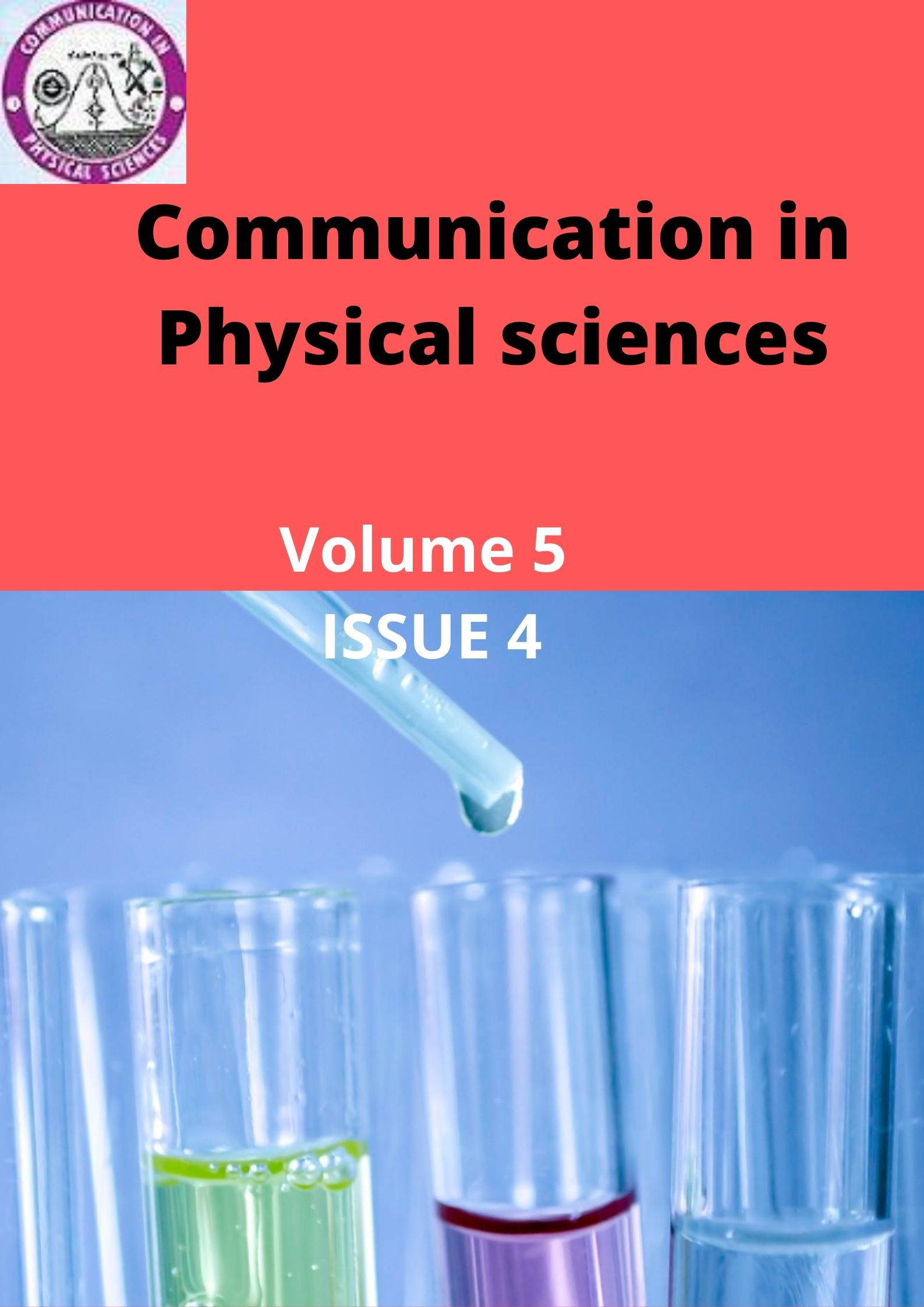Isolation and Characterization of Secondary Metabolite from the leaves Aspilia Africana (Pers.) C. D. Adams (Asteraceae)
Keywords:
Squalene, isolation and characterization, Aspilia Africana, MS and NMRAbstract
Aspilia africana is a medicinal plant used traditionally for treating various diseases. Phytochemical investigation of the methanol extract of the leaves has led to the isolation of squalene (hexamethyl-2, 6, 10, 14, 18, 22-tetracosahexa-ene) from the leaves of A. Africana and is known to possess significant antimicrobial activity, it has not been known to be previously isolated from Aspilia Africana. The structure of the component was elucidated based on the NMR and MS techniques and by comparison of their experimental data with literature. The purified compound was obtained by chromatographic method.
Downloads
Published
Issue
Section
Most read articles by the same author(s)
- Chisom Friday, Okenwa U. Igwe, Jude C. Nnaji, Nanoremediation Research in Nigeria: A Review , Communication In Physical Sciences: Vol. 9 No. 1 (2023): VOLUME 9 ISSUE 1
- Ahamefula A. Ahuchaogu, Chukwuemeka T. Adu, Review of Reverse Osmosis as Green Technology against Water Supply: Challenges and the way Forward , Communication In Physical Sciences: Vol. 6 No. 1 (2020): VOLUME 6 ISSUE 1
Similar Articles
- Ibrahim Isyaku, Isaac A. Bello, I. G. Ndukwe, I. G. Kizito, Isolation and Characterization of Nonanoic Acid from Ethyl Acetate Extract of Adenodolichos paniculatus (hua) Hutch. & Dalz (Fabaceae) , Communication In Physical Sciences: Vol. 5 No. 3 (2020): VOLUME 5 ISSUE 3
- Chinwendu Olive Ozoeze, Okenwa Uchenna Igwe, Isolation and Characterizations of a Pentacyclic Glycoside from Methanolic Fraction of Allium sativum (Purple Garlic) Bulbs , Communication In Physical Sciences: Vol. 12 No. 3 (2025): VOLUME 12 ISSUE 3
- Onyinyechi Uloma Akoh, Onuchi Marygem Mac-Kalunta, Stella Mbanyeaku Ufearoh, Ifeanyi Edozie Otuokere, Johnbull O. Echeme, Isolation, Characterization and Antimycobacterial Potency of a Steroidal Derivative from the Chloroform Crude Extract of Icacina trichantha Oliv Tuber , Communication In Physical Sciences: Vol. 11 No. 1 (2024): VOLUME 11 ISSUE 1
- Ifeanyi E. Otuokere, J. C. Anyanwu, K. K. Igwe, Ni(II) Complex of a Novel Schiff Base Derived from Benzaldehyde and Sulphathiazole: Synthesis, Characterization and Antibacterial Studies , Communication In Physical Sciences: Vol. 5 No. 2 (2020): VOLUME 5 ISSUE 2
- Patricia Adamma Ekwumemgbo, Gideon Adamu Shallangwa, Idongesit Edem Okon, Ibe Awodi, Green Synthesis and Characterization of Iron Oxide Nanoparticles using Prosopis Africana Leaf Extract , Communication In Physical Sciences: Vol. 9 No. 2 (2023): VOLUME 9 ISSUE 2
- Chidi P. Njoku, Bright C. Onyekwere, Rosemary I. Uchegbu, Chintua E. Igara, Ifeanyi E. Otuokere , Johnbull O. Echeme, Isolation and Characterization of Buchholztrienone A, a Novel Trienone Glycosidic Polyketide from the Stem Bark of Buchholzia coriacae Engler (Capparaceae) , Communication In Physical Sciences: Vol. 12 No. 5 (2025): Vol 12 ISSUE 5
- Ifeanyi E. Otuokere, K. K. Igwe, Ni(II) complex of (3,3-dimethyl-7-oxo-6-(2-Phenylacetamido)-4-thia1-Azabicyclo[3.2.0]heptane-2-carboxylic acid : Synthesis, characterization and antibacterial activities , Communication In Physical Sciences: Vol. 5 No. 1 (2020): VOLUME 5 ISSUE 1
- Chidi P Njoku, Raina A. Ekpewu-Ovie , Isaac O Odiba, Maduabuchi J. Nwosu, Chintua E. Igara, Isolation and Structure Elucidation of Buchholzcine A, a Novel Steroidal Cyanoformamide from the Stem Bark of Buchholzia coriacae Engler (Capparaceae) , Communication In Physical Sciences: Vol. 12 No. 4 (2025): VOLUME1 2 ISSUE 4
- Joseph Reuben Wartu, Sani Sambo Datsuqwai Mohammed, John Idakwoji , Regulatory Gene, aflaR Identification of Aflatoxigenic Moulds and total Aflatoxin estimation in Digitaria exilis and Digitaria iburua sold within Kaduna Metropolis , Communication In Physical Sciences: Vol. 9 No. 1 (2023): VOLUME 9 ISSUE 1
- Nsikanabasi Ekerete Nkom, Ededet Akpan Eno, Atim Sunday Johnson, Idongesit Bassey Anweting, SYNTHESIS AND CHARACTERIZATION OF 4- AMINO-3-MERCAPTO-5-METHYL-1, 2, 4 -TRIAZOLE AND ITS MIXED- LIGANDS COMPLEX WITH Cd (II) IONS , Communication In Physical Sciences: Vol. 12 No. 6 (2025): Volume 12 ISSUE 6
You may also start an advanced similarity search for this article.




